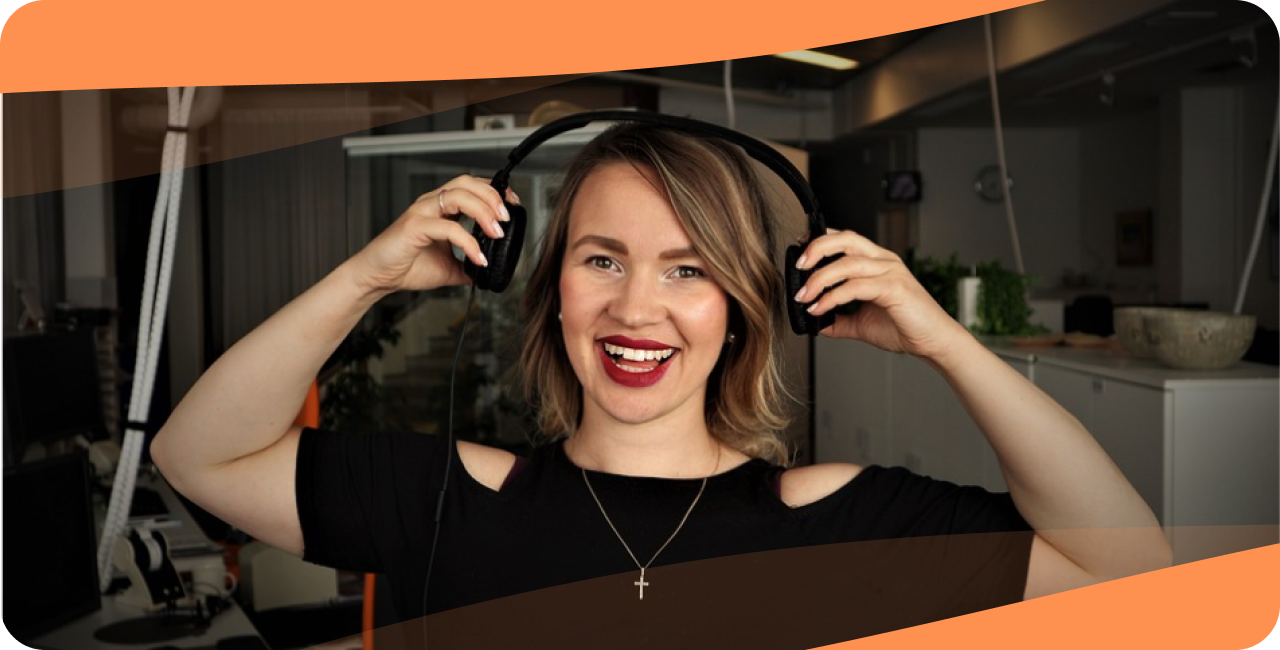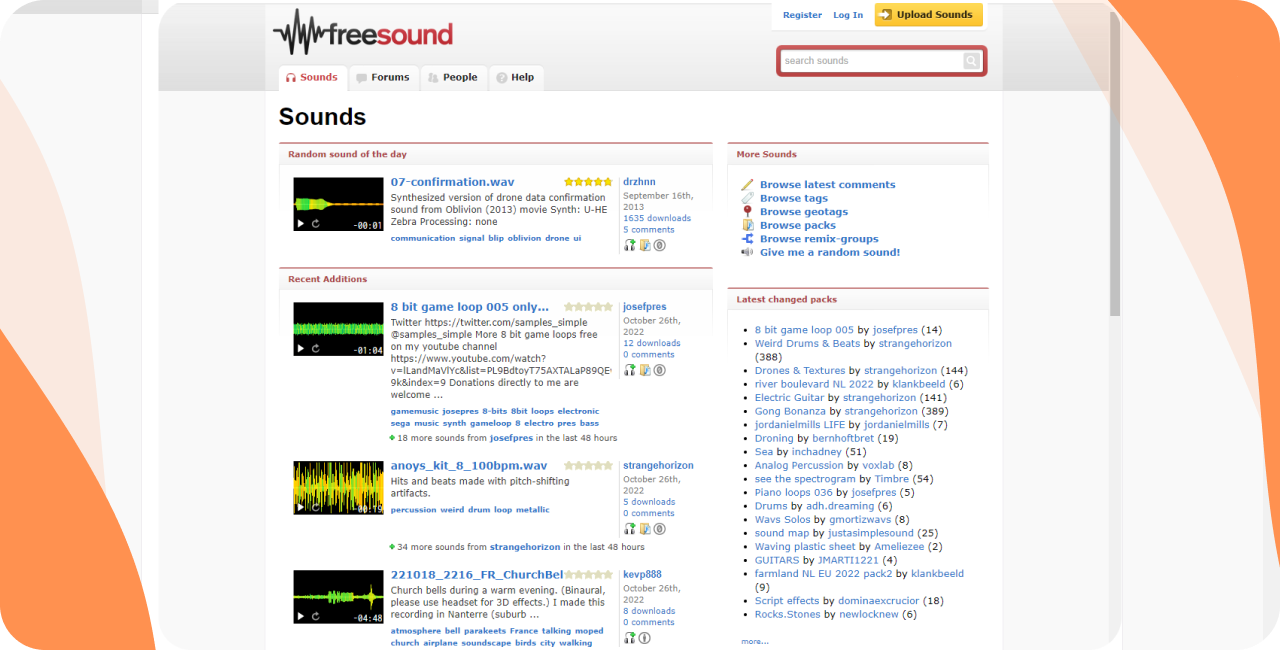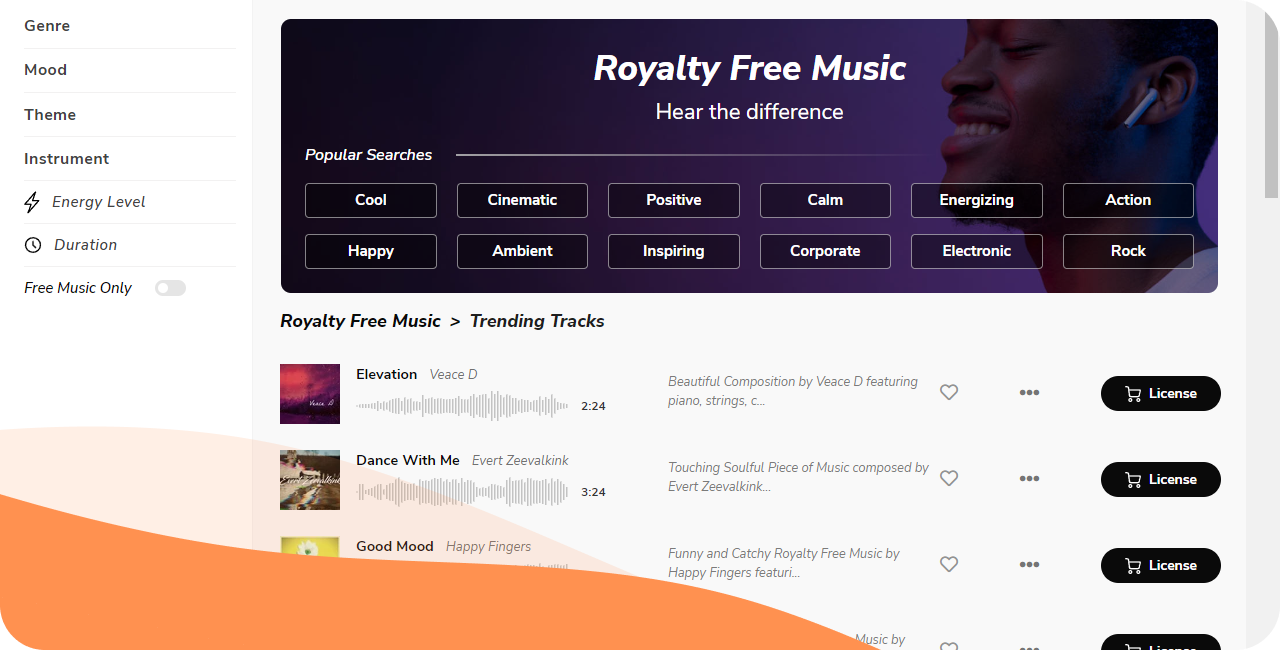Sound effects and music are such an integral part of media that we often don’t even think about them. Yet, whether you’re watching a YouTube video, playing a game, or listening to your favorite podcast or radio station, sound effects and music will be a big part of the experience.
Why Use Podcast Sound Effects?
Sounds are used for many reasons but, simply put, they’re there to enhance the experience. Whether that’s heightening the emotion of a scene or providing a comedic punchline. When it comes to an audio-only show like a podcast or radio show, sound effects are even more important.
You can’t convey any visual information to set the scene. So, if you’re telling a story, sound effects can help immerse your audience. Without facial expressions and body language to rely on, using the right music is vital for enhancing emotional moments.
Not every podcast or radio show tells a story. That doesn’t mean that sound effects and music should be ignored, though. Think about it, your favorite podcast has an intro tune, right? Even training videos explaining IVR meaning to new employees use music and sounds.
That’s because working in audio format means that sound is always important. Let’s talk about the main ways that podcasts and radio stations use sound and music to enhance their shows.
How do Podcasts & Radio use Sound Effects and Music?
There’s no set way to use sound effects, they’re a creative choice. It’s important to understand that to make good use of sound in your show. Using sound effects by sound buttons lab and music that fit the theme and tone of your podcast is the best guide you can follow. The rest is up to you.
Storytelling
One of the most common uses of sound effects is to complement storytelling. The clunk of a car door closing or the crunch of gravel underfoot can help set your scene. When sound effects are used like this, they feel natural and blend into the soundscape of your story.
Music can also be a powerful storytelling device, used to build tension, drive action, or heighten the emotion of a scene. This has to be carefully balanced, as overpowering your dialogue and other audio can ruin the effect.
Comedy
Okay, when you hear this your mind probably goes straight to cheesy cartoon effects. The use of sound in comedy goes beyond slide-whistles and “boing” sounds, though. If you want to convey moments of physical comedy in audio form, sound effects are the only way to do it.

Intros/Outros
An intro is more important than some people think. It’s not just hold music while your audience waits for the show to start. An iconic intro needs to set the tone of the show. It needs to fit your themes and it needs to be something that will resonate with your audience.
Music can conjure any number of emotions. It can be somber, exciting, mysterious, fantastical, or anything you need. Intros can use this to set expectations for the tone and direction of the show. It’s the first thing listeners will hear and first impressions are always important.
Breaks & Segues
If you’re new to podcasting or hosting, then you might not have heard the term “negative space.” This is what we call any moment in your recording without dialogue or other audio. Music, sound effects, and voiceovers can be used to fill these spaces and keep the show moving.
Where do I Find Sound Effects & Music for my Podcast?
Just like if you’re searching for the best email tracker, the best place to find sounds is online. You don’t want to run up against copyright infringement and DMCA notices, though. Before you go looking for sounds, make sure you understand how copyright works.
Understanding Copyright
Not all music or sound effects are free to use. In fact, it’s more common for music and sound to be copyright protected. That means that it can’t be used for other work without obtaining permission or paying for a music license. Copyright is normally held by the creator of the work.
Copyright is complex, there’s a difference between “free to use” and “royalty-free.” There are options for both sound effects and music that are completely free, though. The best practice is always to check the source of the sound or song and its license information.
If you’re looking for podcast sound effects or music, these are the best free and paid options.
Free Sound Effects
Freesound is the biggest library of free-to-use sound effects out there. The sounds on here fall under what’s known as a creative commons license. That means non-commercial work can use them for free. Some sounds can even be freely used for commercial work (a “zero” license).

Videvo is a also great service for everyone who would like to get premium sound effects, whether for a personal blog, radio shows, podcasts, or even social media. The site is very user friendly and is also easy to use via mobile devices.
Free Music
Mixkit offers free stock music and sound effects. Be aware that there are restrictions around what music tracks can be used for, commercially, though. There are many great resources for music that is free for commercial and non-commercial use, as well as royalty free videos.
Paid/Subscription Sound Effects & Music
Here’s where the difference between free and royalty-free comes in. Royalty-free just means that the creator will not claim royalties from things like additional downloads or recasts of your show. That’s often because you’ve paid a subscription fee or a license fee.
Sites like Tribe of Noise pro or Bensound offer subscriptions that give you access to large libraries of music and sounds for a fee.

Tips for Editing Your Podcast Sound Effects
Editing is essential to get great-sounding audio effects and music. You want to make sure you’re using software that works for your level of experience and your genre.
Pick the Right Software
This is an important choice, when you create a radio station you need a platform to broadcast on. If you’re making a podcast then you’ll want to research editing software you can use comfortably.
Balance
Balance is everything when it comes to audio. Sound effects or music that overpowers other sounds can be jarring to an audience. On the other hand, dialogue and sounds that are mixed too low will lose their impact.
Final Thoughts: Sounds Good
Every radio show and podcast is different. If you’re an upbeat entertainment show then you want a fun and high-energy atmosphere. If you’re explaining where to get the best digital signature software free, you want to set a professional tone.
Don’t be afraid to experiment with effects and music until you get a sound that is uniquely yours!

Author bio: Tanhaz Kamaly – Partnership Executive, UK, Dialpad UK
Tanhaz Kamaly is a Partnership Executive at Dialpad, a modern cloud-hosted business communications platform that turns conversations into the best opportunities, both for businesses and clients with features such as call waiting setting. He is well-versed and passionate about helping companies work in constantly evolving contexts, anywhere, anytime. Tanhaz has written for domains such as MarketingProfs and Track-POD. Check out his LinkedIn profile.